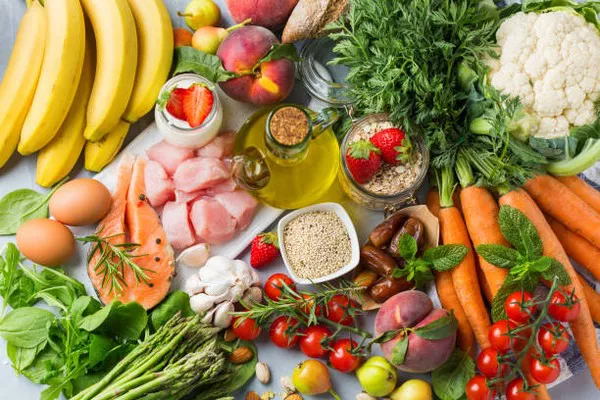Maintaining a slim figure requires not just calorie control but also smart eating strategies. Dr. Nguyen Anh Tuan, Deputy Head of the Institute of Digestive Surgery at the 108 Central Military Hospital, emphasizes that a well-regulated diet is key to preventing weight gain. By choosing the right foods and adopting mindful eating habits, you can eat less while feeling fuller for longer. Here are five effective tips to help you achieve that:
1. Choose Foods with Low Energy Density
Energy density refers to the number of calories in a given weight of food. Foods high in energy density—such as pastries, fried items, and sugary snacks—are often less filling and can lead to overeating. In contrast, foods that are low in energy density tend to be rich in water, fiber, and protein, making them more satisfying.
Recommendation: Focus on incorporating:
- Vegetables (like leafy greens, carrots, and cucumbers)
- Fruits (such as berries, apples, and oranges)
- Whole grains (like quinoa, brown rice, and oats)
- Lean meats (such as chicken and turkey)
- Fish (especially fatty types like salmon)
- Dairy products (like yogurt and low-fat cheese)
- Beans and legumes (such as lentils and chickpeas)
These foods provide the necessary nutrients without excessive calories.
2. Opt for Foods with Greater Volume
The physical volume of food can significantly influence your satiety levels. For instance, consider two meals containing the same number of calories: a small piece of cake with potato chips versus a large plate of vegetables with a glass of milk. The second option, filled with high-volume, low-calorie foods, will take up more space in your stomach, helping you feel fuller without consuming more calories.
Recommendation: Whenever possible, choose high-volume foods like:
- Salads (loaded with a variety of vegetables)
- Soups (preferably broth-based)
- Vegetable stir-fries (with minimal oil)
3. Include Fiber in Your Diet
Fiber is not only essential for digestive health but also plays a critical role in keeping you full. Foods high in fiber are harder to digest and can expand in the stomach, promoting a prolonged feeling of fullness.
Recommendation: Aim for about 30 grams of fiber daily, which can be achieved through:
- 200 grams of whole grains
- 500 grams of green vegetables
- 250 grams of fruit
- A small handful of soybeans
Incorporating fiber-rich foods like beans, whole grains, and vegetables can help you meet your daily intake.
4. Eat Slowly and Chew Thoroughly
Eating speed significantly impacts satiety. It takes about 15 minutes for blood sugar levels to rise after eating, sending signals to the brain that you’re full. Eating too quickly can lead to overeating, as you may consume more food before these signals take effect.
Recommendation:
- Take 20-30 minutes to finish your meal.
- Chew each bite thoroughly (about 20 times) to aid digestion and promote a greater feeling of fullness.
Practicing mindful eating can help you appreciate your food more and recognize when you’re satisfied.
5. Choose Slow-Digesting Foods
Foods that digest quickly, like sugary snacks and refined carbohydrates, can lead to rapid hunger returns. To maintain satiety longer, focus on slow-digesting foods.
Recommendation: Incorporate:
- Protein-rich foods (like lean meats, fish, and soy products)
- Whole grains (as opposed to refined grains)
- Healthy fats (such as avocados and nuts in moderation)
These foods not only help you feel full but also require more energy to digest, which can aid in weight management.
Conclusion
By implementing these strategies—focusing on low energy density foods, opting for high-volume options, incorporating fiber, eating slowly, and choosing slow-digesting foods—you can effectively eat less while still feeling full. This approach not only supports weight loss but also contributes to overall health and well-being. Enjoy your meals while maintaining control over your weight, and embrace a sustainable lifestyle that prioritizes nutritious choices.
Related Topic:
What to Eat Pre and Post Workout for Fat Loss


